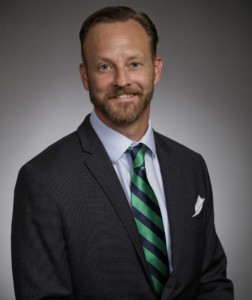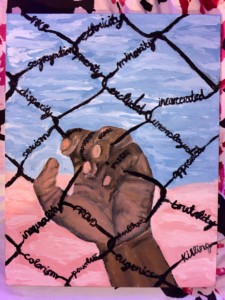PRAIRIE VIEW, Texas – In 2018, Prairie View A&M University (PVAMU) announced it would establish the African-American Studies Initiative within the Marvin D. and June Samuel Brailsford College of Arts and Sciences through a grant from the Andrew W. Mellon Foundation. Inspired by PVAMU President Ruth J. Simmons, the goal of the initiative was to infuse African-American studies content throughout the university’s liberal arts offerings.
Supported by the new African-American Studies curriculum, Honors students in Honors Colloquium course HCOL 1213, taught by philosophy associate professor Mark Tschaepe, Ph.D., are learning firsthand how art connects with African-Americans and society.
“One of the student’s final projects last semester was to take aspects of what they had learned in class about race and racism, and the relation of those to art, and create something that expressed some ideas they believe are important,” said Tschaepe. “Some of the things that are important about such a project are that they build upon their abilities to communicate in multiple media, not merely speech or prose, and their projects are artifacts that they may use later to demonstrate some of their experiences here.”
First-year nursing student Taryn Eddie described her final project in detail.
“The painting is an image of an African American’s hand hanging onto a gate for dear life. On the gate are controversial words: eugenics, brutality, oppressed, and powerless. The other terms have negative associations in society: incarcerated, killings, sexism, colorism, and segregation. The fingers on the hand have positive words: strong, empowerment, equal, and pride. This painting is important to me because it is symbolic of the racial inequities of African Americans. It represents our struggles to progress and succeed for hundreds of years. It is also representative of a need for increased diversity,” said Eddie, who is in her second semester in the PVAMU Honors Program.
Students interested in joining the innovative Honors Colloquium course must, like Eddie, be a part of the Honors Program at PVAMU.
“The Honors Program courses utilize high-impact practices (HIP), which are active learning practices that promote deep learning by promoting student engagement,” said Quincy Moore, Ph.D., Honors Program director. “The program seeks scholars who are not only asking the question ‘why’ as it relates to different processes and questions but are seeking innovation and the intellectual ability to improve people, processes, and policies that lead to improvements locally, regionally, nationally, and internationally.”
Like all professors, Tschaepe has been challenged with finding a safe way to educate students during the ongoing coronavirus pandemic. “In 2019, I was able to take the Honors Class to the Menil Art Collection, which provided them with inspiration,” he said. “[Last year’s and] this year’s students rely on remote learning to study art and biographies of different artists, including Jean-Michel Basquiat and Kara Walker.”
Instead of presenting artwork to faculty, staff, and other students at an official art opening, Honors Colloquium course participants have been unveiling their work online. Neither Tschaepe nor any of the students preview their classmates’ projects, which provides an exciting reveal for everyone.
“Students are empowered to use their own creativity to select a medium and create their artwork,” said Tschaepe. “Media options include oil, acrylic, watercolor, sculpture, and mixed media. After creating their piece of art, each student writes a summary to explain how their project relates to specific content they learned in class.”
Last semester, Tschaepe’s students used ideas from works they had studied: Stony the Road, The History of White People, and How to Be an Antiracist. Grades were given not based on how aesthetically pleasing the project was but on the analysis.
“Both years that I have done this with the Honors Colloquium, I have been impressed,” he said. “This year, what was striking was how good the students’ work was from multiple perspectives. Not only were they able to communicate things they found important learned in the course, but their work was aesthetically brilliant. My hope is that some of them are discovering voices they didn’t know they have or are enhancing those voices they have already been using through different media.”
Integrating art into coursework is nothing new for Tschaepe. He used visual media in his Critical Thinking course, where students created their own digital comics. Many participants initially express fear and hesitation about engaging in a creative art project, but Tschaepe says they always benefit from the experience. “The feedback about it after having gone through it is overwhelmingly positive,” he said.
Tschaepe is a great example of PVAMU professors going beyond traditional instruction and finding ways for students to dig deeper so they can truly embrace the material they learn. “Part of this exercise involves student empowerment and fostering their freedom to construct reflections or imaginations of the world that contribute to their flourishing,” he said. “I think this project encourages that, no matter how scary it is for some of them initially!”
-PVAMU-


